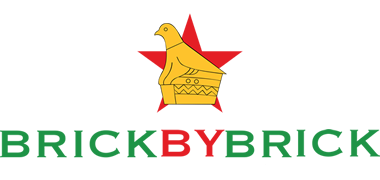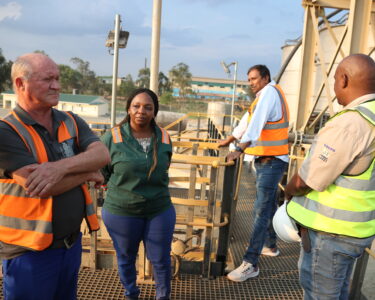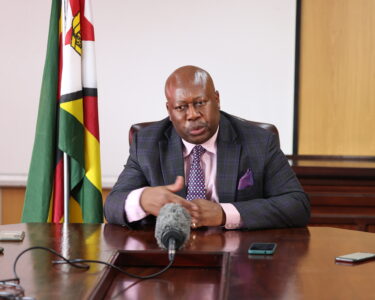China’s leading steel dealer, Sinosteel Corporation, through its Zimbabwean mining unit, the Zimbabwe Mining and Smelting Company (Zimasco) has shown beyond doubt that it is an all-weather friend. After taking over Zimasco in 2007 when many international companies considered Zimbabwe as an unsafe investment destination, Sinosteel has continued pouring funds into the country’s largest ferrochrome producer.
In 2018, Sinosteel announced that it would invest US$1 billion in Zimbabwe to build a power plant and increase ferrochrome production at Zimasco. In 2021, it invested about US$100 million towards refurbishing some of Zimasco’s furnaces and building two new ones at the Kwekwe premises. When construction of the furnaces began in earnest last year and there was an air of expectation that these developments would lead to improved operational efficiencies. However, when the Brick by Brick magazine team recently visited the Kwekwe-based ferrochrome producer, they came face-to-face with a top management that looked visibly downbeat but confident that all be well.
The question uppermost on our minds was: “What went wrong?
“High power tariffs,” was the collective answer from the Zimasco top brass listed below:
- Lu Xiangkun — Executive chairman
- John Musekiwa – Chief executive officer
- Namatai Mapfumo — Chief operating officer
- Ngonidzashe Mpofu — Business operations executive
- Bight Chitiki — General manager, Kwekwe Division
- Wiliam Gwede — Group projects manager
- Knowledge Tazvinga — Finance and administration manager, Kwekwe Division
- Mugove Bhunu — Maintenance manager, Kwekwe Division
However, Brick by Brick will save the power challenges for last as it is not all doom and gloom at the ferrochrome behemoth, whose story needs to be told. And who better to tell it than the company’s chief operating officer, Namatai Mapfumo?
“Zimasco is the largest integrated ferrochrome producer in Zimbabwe. We do all the mining, smelting and value addition here in Kwekwe,” Mapfumo began. “Our raw material comes from chromite ores dotted along the Great Dyke all the way from Mberengwa right up to Tengenenge. In terms of transport, we rely on the National Railways of Zimbabwe (NRZ) to move our ores to Kwekwe. We also depend on the NRZ to ship the finished product – ferrochrome — to the port in Mozambique. About 99% of our ferrochrome is destined for the export market, notably Europe, the US and China. The US is, in fact, one of our biggest markets, thanks to the high quality of our finished product.
“Our mining division plays four key roles – management of the company’s mineral resources, including securing and valuing it; production of the chromite ore concentrates which we are mining mostly in the North Dyke for export and beneficiating them at the smelter; production and supply of chromite ore feed for the furnaces and, lastly, the planning and implementation of exploration and mining projects like developing new mines and implementing new mining methods.
“Zimasco produces four different types of products. Right at the top is ALT, which is 62% minimum in terms of its chrome and alloy content. This is followed by Grade R, which contains a minimum of 56% in terms of its chrome and alloy content. At the bottom of the scale are the two S Grades, which are essentially by-products of the ALT and Grade R production process.
“All our mines are currently outsourced. By this I mean, we are supporting local businesspeople and small-scale miners who are mining our claims and digging up the ore that feeds into our smelters. Zimasco provides technical assistance, for example geological services, mine planning as well as the designs of the mines to our contractors. We compensate our contractors in terms of cost per tonne of ore produced. We also assist them with working capital. In addition, high-flying small-scale miners benefit from equipment such as front-end loaders, dump trucks, etc, so that they are able to work more efficiently.
“At the Kwekwe smelter, we have four 18 MVA submerged arc furnaces (SAF) – these are furnaces 3, 4, 5 and 6. The installed production capacity is 144,000 tonnes per annum of high-carbon ferrochrome. We also have downstream plants for the purposes of processing and recovering alloy from slag (AFS) and metal from slag (MFS). All this is made possible by our new crushing system (NCS) whose objective is to extract as much as possible from the chrome ore delivered here,” said Mapfumo.
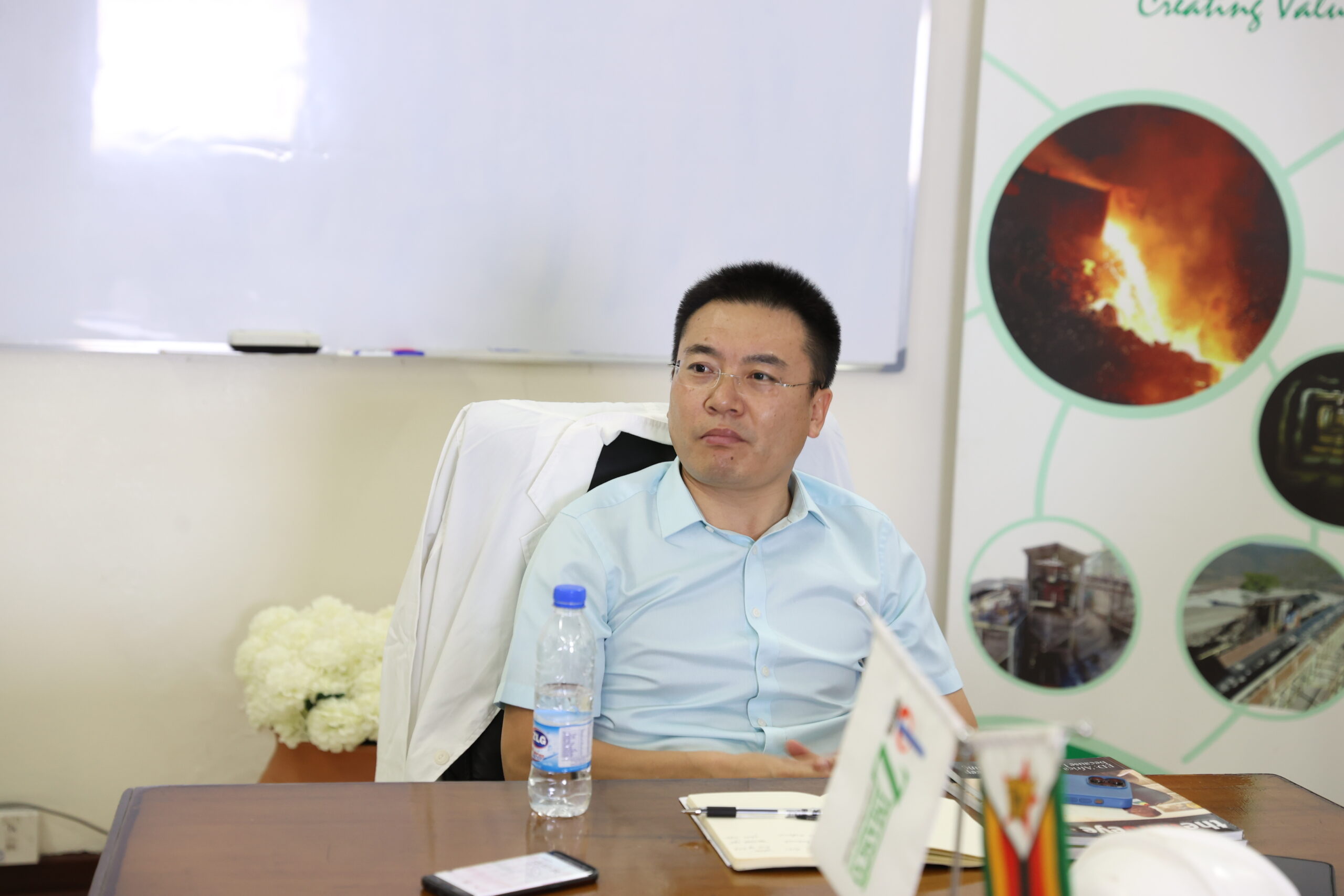

The expansion drive
According to geological estimates, Zimbabwe boasts the world’s second-largest chrome reserves after South Africa. Zimasco, alongside AfroChine, another Chinese firm, are the two major producers of ferrochrome which is used in the production of a wide variety of stainless steel products ranging from cutlery to reinforced steel fabrication. Ferrochrome, alongside platinum and diamonds, is among the commodities expected to grow Zimbabwe’s mining into a US$12 billion industry by 2023.
In light of this, Zimasco is embarking on an expansion drive which, the company says, dovetails with the Second Republic’s National Development Strategy 1 (NDS1).
Continues Mapfumo: “We have embarked on an expansion drive that will see the addition of four modern furnaces. This will involve the upgrading of furnaces 1 and 2 at West Plant. These two are currently open 18 MVA submerged arc furnaces. We are therefore upgrading them into semi-closed, bigger 19.8 MVA submerged arc furnaces with better productivity and higher capacity to consume ore fines and friable ores more efficiently. This will add in excess of 80,000 tonnes per annum to our current ferrochrome production figures.
“The two brand-new furnaces – 7 and 8 at the East Plant — are also 19.8 MVA, but are now fully closed submerged arc furnaces with even much better productivity and higher capacity to consume ore fines and friable ores safely. The hot off-gases from these furnaces are going to be harnessed and purified to be used in firing the agglomeration and sintering plant. These two furnaces will also add in excess of 80,000 tonnes per annum to our current ferrochrome production capacity.
“We are constructing the agglomeration and sintering plant at the East Plant with a capacity of 300,000 tonnes per annum of sinter that we are putting up for feed preparation from the ore fines that will feed the furnaces. This plant is dependent on the off-gases from furnaces 7 and 8. Those gases from the furnaces will not be released directly into the atmosphere as is usually the case. They will be harnessed and purified to fire the agglomeration and sintering plant.
“Furnaces 1 and 2 will be up and running soon while furnace 7 is expected to be on stream by year-end (2022) and furnace 8 around mid-2023. We expect all the four furnaces around mid-2023 to be up and running.
“About US$100 million has been poured into this expansion programme in response to the Second Republic’s call for increased investment in the economy, value addition and beneficiation.
“Zimasco is poised to generate about US$160 million per annum once the expansion programme is fully implemented. In excess of 400 people will be employed at the smelter, not mentioning the impact on downstream industries,” concluded Mapfumo as he handed the floor to chairman Lu.
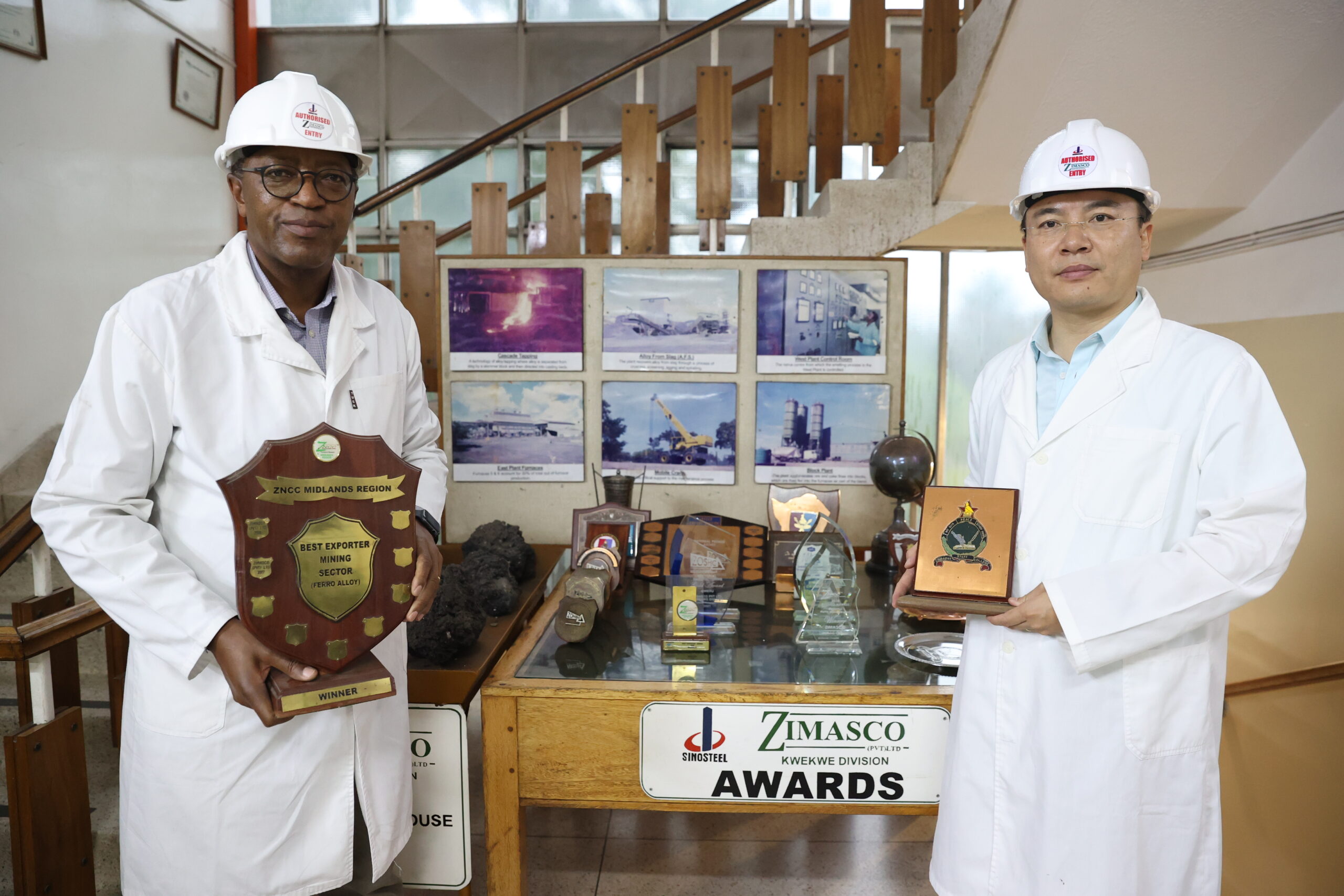
And then the passionate plea from Zimasco
Says Lu: “Sinosteel has been in Zimbabwe for more than 40 years, and I have been here for 12 of those. Our decision to invest in Zimbabwe was driven by our absolute confidence in this country. The government of Zimbabwe’s ‘Open for Business’ policy makes Zimbabwe a very attractive investment destination. Yes, it has taken the country time to recover because of several [perception] issues, but if you look at the investments coming into Zimbabwe, you can see that many people are now confident of doing business here.
“For its part, Sinosteel turned a deaf ear to sanctions issues and associated negativity and went about with its investment plans.
“I have no doubt in my mind that Zimbabwe is destined for unparalleled economic growth, so is Zimasco, despite the power challenges we are currently facing.”
Lu then proceeded to shed more light on Zimasco’s plight.
“As ferrochrome producers, we were previously granted a special tariff on our electricity consumption. However, this has since gone up 82% in US dollar terms, rendering the ferrochrome industry unviable. Only recently (November 10, 2022), we were forced to switch off furnaces 5 and 6 because of the unsustainably high power tariffs. If power is restored soon, we can resume production on furnaces 3, 4, 5 and 6.
“I believe the ferrochrome industry deserves special treatment because it is power-intensive. Electricity accounts for about 30-40% of our total cost against 10% for other mining companies. We are, therefore, appealing for a government subsidy, like they have in South Africa. It’s very difficult to survive in this industry without some form of subsidy,” said the chairman.
“With government support, we can contribute significantly to the country’s economic growth in terms of employment creation, tax revenues and foreign currency earnings. It will be a win-win situation. We win, the country wins. We have engaged the Minister of Mines [and Mining Development] and Zesa Holdings to revisit the tariff issue and it is our hope that a mutually beneficial solution will be found soon. Minister [Winston] Chitando is doing everything in his power to help us,” explained Lu.
Apart from the well-documented power challenges, Zimasco bemoaned another potential minefield — transport. According to CEO John Musekiwa, ferrochrome is a bulky product which can only be transported by rail. However, since the NRZ was failing to cope, an urgent solution was needed.
“NRZ is an integral part of our business. We use bulk inputs and we also export our products in bulk. There is need to capacitate NRZ so that it returns to its former glory days. In this regard, we have engaged the NRZ for a public-private partnership (PPP) towards the purchase of modern wagons and locomotives,” said Musekiwa as he took the Brick by Brick magazine team on a tour of the Kwekwe smelter.
The Zimasco we toured that day was a far cry from the Zimasco of yesteryear. It was obvious that without electricity, the Kwekwe blast furnaces would not be belching out the thick black smoke typical of a smelting plant. But as chairman Lu opined, Zimasco was keen to contribute its share to the targeted US$12 billion mining economy as long as the current power challenges were addressed.
Zimasco may be down, but certainly not out, was the defiant message from the ferrochrome smelter’s hierarchy.

